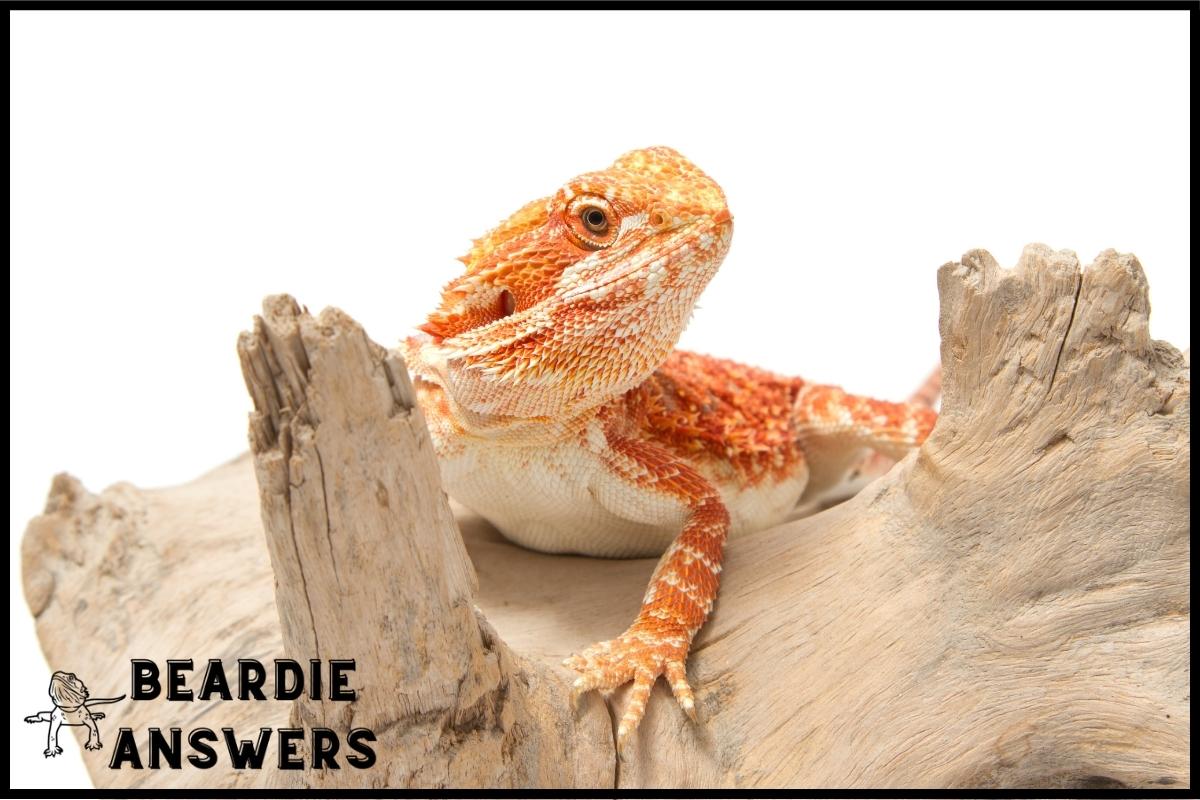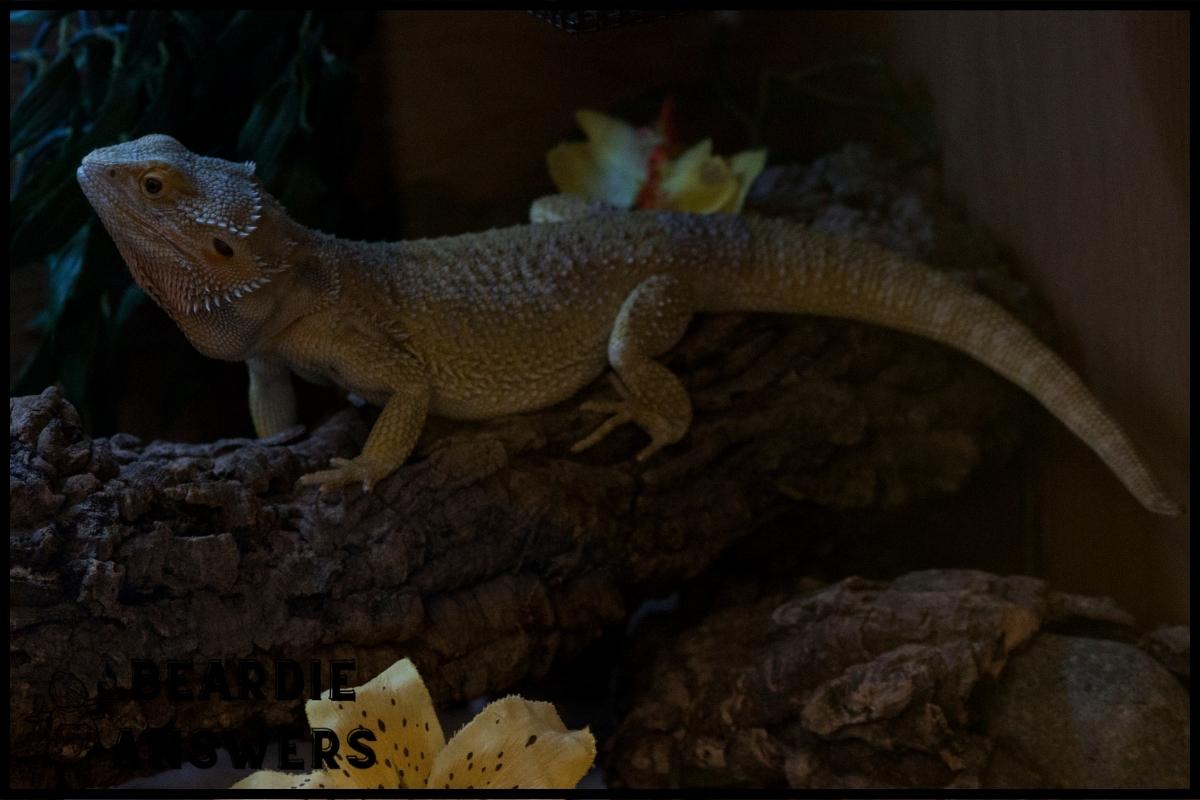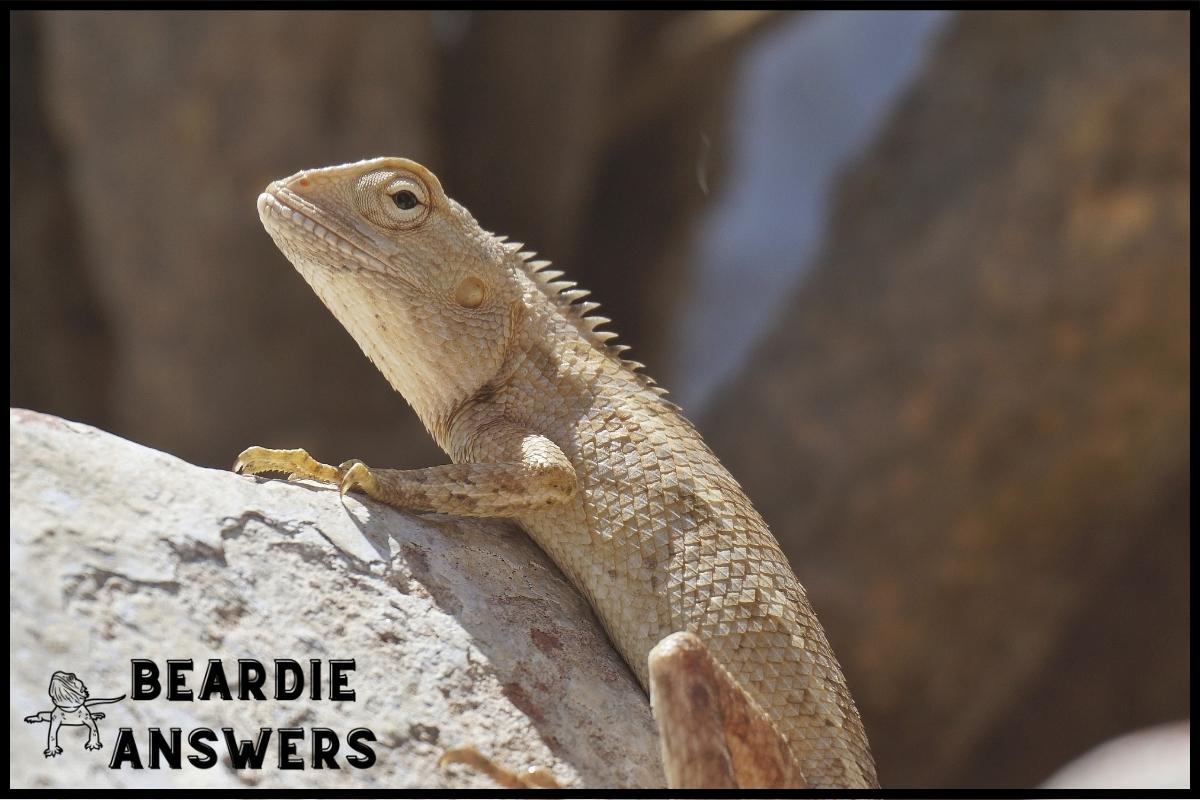Female bearded dragons can grow up to 2 feet in length, with males being slightly larger. However, the size and growth rate of bearded dragons can vary depending on various factors such as diet, genetics, and environment. Providing a spacious and well-equipped enclosure, along with a balanced diet, can help ensure that your bearded dragon grows to its full potential.
What You'll Learn
Size Variations In Bearded Dragons
Bearded dragons are a species of lizards that come in various sizes, and understanding their size can provide insight into their social behavior and mating rituals.
Female bearded dragons captivate us with their remarkable adaptability—these small creatures have the potential to grow up to two feet long! That is quite impressive for an animal so diminutive. Males tend to be slightly larger than females but not by much; however, both sexes will reach similar lengths when fully grown.
The size of a bearded dragon has several implications on its genetics and diet. A bigger beardie is likely to require more food than a smaller one due to its greater energy requirements. Furthermore, it may show different behaviors from those exhibited by smaller individuals as it matures. This could include changes in coloration or even breeding habits – something many owners find fascinating about these reptiles!
By studying the physical characteristics of bearded dragons, we can gain valuable insights into the unique biology of this species. For example, knowing the size differences between males and females helps us understand how they interact within their environment and why certain mating rituals take place during specific times of year.
It also provides clues as to what types of diets each gender prefers and how best to care for them over time. With this knowledge in hand, anyone looking to keep a pet lizard should feel confident that they’re providing proper nutrition and living conditions for their new companion!
Transitioning into discussing genetic structure and dietary needs is essential for any owner wishing to ensure their reptilian friend remains healthy throughout its life span.
Genetics And Diet
Genetics and diet are important components of a female bearded dragon’s life. Their genetic makeup determines their size, health, and behavior. Proper nutrition is necessary for them to thrive in captivity.
Here are four key things to understand about female beardie genetics and diet:
- Bearded dragons come from arid regions in Australia, so they need special food that provides the nutrients found in these areas.
- Female bearded dragons should be given insect prey like crickets or mealworms as well as leafy greens like kale or collard greens with calcium added on occasion as part of a balanced diet.
- A variety of fruits can also be offered occasionally as treats; however, it is not recommended to feed too many sweets because they may cause digestive issues.
- Genetics plays an important role when it comes to overall health, growth rate, and coloration of a female beardie—it’s important to get your pet from a reputable breeder who knows what they’re doing!
Knowing the basics of genetics and diet requirements will help you keep your female bearded dragon healthy and happy throughout her lifetime. With this knowledge under your belt, let’s move on to discuss housing and environmental conditions…
Housing And Environmental Conditions
Creating a proper habitat for your female bearded dragon is essential to her health and wellbeing. As you enter into this new realm of pet ownership, it’s important to understand the particulars that make up an ideal living environment.
Like many creatures, these dragons require certain temperature control, substrate choices, as well as adequate space in order to thrive. Bearded dragons prefer temperatures between 85-90°F (29-32°C) during the day and 75-80°F (24–27°C) at night. Additionally, they need access to both basking spots and cooler areas in their enclosure so they can regulate their own body heat. A thermometer should be used to monitor the temperature inside your tank or terrarium; never rely on guesswork!
Substrate choices are equally critical when considering what type of bedding would best suit your dragon’s needs. Cedar shavings may seem like a good option but because of its tendency to cause respiratory infections, we recommend using sand or reptile carpet instead.
Since female bearded dragons grow up to two feet in length, having a spacious home will help them live comfortably without feeling cramped. The minimum recommended size for an adult beardie is 40 gallons with dimensions no less than 36 x 18 inches wide and 12 inches tall—this amount of room gives them ample opportunity explore and move around freely throughout their cage.
With all of these components set in place, you’ll have created a safe haven where your beloved furry friend can thrive!
Health And Wellbeing
In order to maintain the health and wellbeing of female bearded dragons, it is important to be aware of their exercise needs and temperature regulation.
Female bearded dragons should have ample opportunity for activity throughout their day; this can include running around, climbing or exploring. Additionally, they need regular access to a basking spot with temperatures between 95-110°F (35-43°C). This will help them regulate their body temperature and ensure proper digestion.
It’s also important that these reptiles are provided with an appropriate diet consisting of insects such as crickets, waxworms, dubia roaches, silkworms, hornworms etc., in combination with leafy greens like kale and collard greens. Calcium supplementation may also be necessary depending on the type of food being served.
Maintaining adequate hydration levels is another key factor in ensuring good health since dehydration can quickly lead to serious complications for your pet.
Having established what’s needed for optimal health and wellbeing in female bearded dragons, it is now time to shift focus towards common health concerns associated with these animals…
Common Health Concerns In Bearded Dragons
Health and wellbeing of a female bearded dragon is important to consider when caring for one. As they can grow up to 2 feet in length, understanding common health concerns associated with bearded dragons will help ensure their quality of life.
Common health issues that may be faced by female bearded dragons include:
- Reproduction – Female bearded dragons have the potential to reproduce during their first year and should be monitored closely in captivity if not spayed.
- Parasitic Diseases – Common parasitic diseases such as Coccidia or Cryptosporidium are easily contracted through contact with other animals or contaminated soil.
- Metabolic Bone Disease – This can occur from inadequate calcium intake or an unbalanced diet which could lead to soft bones and fractures.
- Respiratory Infections – Inadequate humidity levels and improper temperatures can cause respiratory infections due to bacterial growth in the lungs or air sacs of your pet’s body.
It is important to take preventative measures against these illnesses by monitoring your pet’s environment and providing them with proper nutrition for optimal health. Knowing how big do female bearded dragons get is only part of the equation; it’s also essential to understand what types of health issues they may face along the way so you’re prepared for any eventuality when caring for a beloved reptile companion.
To ensure a happy and healthy female bearded dragon, taking all necessary steps to promote good physical, mental, and emotional wellbeing should be top priority.
Caring For A Female Bearded Dragon
Caring for a female bearded dragon is not difficult, but does require attention to detail and diligence. With proper care, these fascinating creatures can live up to 10 years in captivity. To ensure her health and longevity, it’s important to understand their needs from the start.
To create an environment that mimics their natural habitat, there are two primary considerations: lighting requirements and temperature ranges. A basking lamp should be placed over the enclosure to provide UVB light as well as heat; this will allow them to properly digest food and prevent metabolic bone disease which results from inadequate levels of vitamin D3. The enclosure must also maintain temperatures between 90-95°F (32-35°C) during the day with a slight drop at night due to nocturnal habits.
A thermometer or digital probe thermometer can help you monitor both ambient air temperature as well as surface temperatures within the terrarium. It’s best practice to check frequently throughout the day and adjust accordingly—too hot or cold could spell disaster for your little reptilian friend.
Taking all necessary steps when caring for your female bearded dragon will guarantee she gets everything she needs to stay healthy and happy!
Conclusion
Female bearded dragons are truly amazing creatures. Their beauty, size and intelligence make them a great pet for those looking to get into the reptile keeping hobby.
As long as they receive proper housing, diet, and health care, these gentle giants can grow up to 2 feet in length with males being slightly larger than females.
With all of this in mind, I think it’s safe to say that female bearded dragons really do live large!

Hi! My name is Bryan, I am the “one behind the words” here are BeardieAnswers.com. I believe that providing quality care and nutrition is the best way to ensure the health of your pet. Every beardie is special and deserves the best care and attention. If you have questions about your bearded dragon, please don’t hesitate to ask! View My Full Author Page




